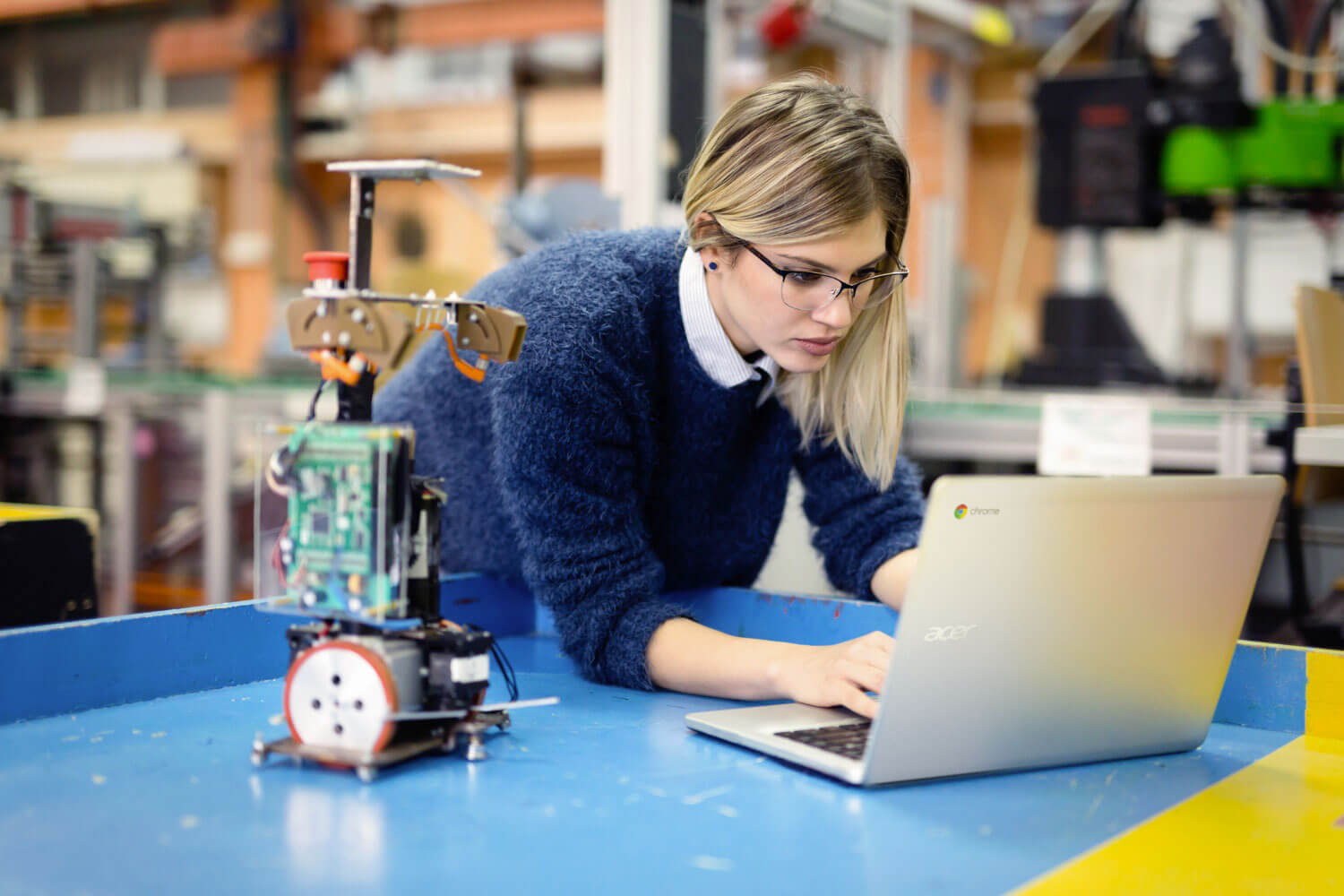RobotLAB Blog
Everything You Need To Know About Robotics in Businesses
Augmented Reality: A Tool for Teaching Students Robot Programming
By Carol Grace for RobotLAB.com

The recent years saw an increased adoption of technology in education, from the shift to virtual learning environments to the use of robotics within classrooms. For instance, a previous post highlights how collaborative robots or cobots have limitless potential not only for improving workplace health and safety but also for transforming education, particularly in the context of teaching engineering. Through open-ended, flexible programming, cobots can help students hone their problem-solving skills and adapt to more complex robotic applications.
Beyond cobots, another emerging technology that demonstrates benefits in classroom settings is augmented reality. Below, we take a look at what augmented reality is and how its applications can particularly help students better understand robot programming.
- 1 Comments
- Jun 3, 2024 10:00:17 AM
- Posted by Maria Alejandra Calcetero
- Topics: STEM, School, Robots,, k12, STEM literacy, school robots
Fostering Innovation Through Youth Education in STEM and EdTech
 Image Source: Unsplash
Image Source: Unsplash
Technological innovation is on the rise, and the world of today looks very different for most than it did ten years ago. With most having access to formerly cutting-edge tech like smartphones and tablets, and new breakthroughs in blockchain and AI technology, the difference is notable; and likely will continue to be so as these innovations become more widely accepted.
As an educator, you’ve likely seen some changes to your day-to-day operations. With cutting-edge educational technology, back-office software that eliminates manual record-keeping, and automation you can leverage to connect with students and parents, you’re seeing an unprecedented amount of technological support. You’ve also, likely, struggled to adapt and learn new systems.
- 0 Comments
- May 16, 2024 2:47:32 PM
- Posted by Maria Alejandra Calcetero
- Topics: STEM, School, Robots,, k12, STEM literacy, school robots
How Parents Can Foster STEM Learning Beyond the Classroom
 Image Source: Pexels
Image Source: Pexels
Science, technology, engineering, and math (STEM) concepts are central parts of life today. There are few jobs and everyday tasks that aren’t in some way supported or driven by advanced tools. This makes it increasingly vital that students can confidently navigate STEM subjects.
Unfortunately, there’s limited time during the school day to devote to this. As a parent, one of the ways to support their in-class education is to foster STEM learning at home. Even a little extra STEM activity, with encouragement from you, can help bolster their understanding, equipping them for the world they’ll be entering as adults.
- 0 Comments
- Apr 19, 2024 11:37:43 AM
- Posted by Maria Alejandra Calcetero
- Topics: STEM, School, Robots,, k12, STEM literacy, school robots
How Robotics Cultivates a Deep Understanding of Mathematics in Students
Image Source: Pexels
- 0 Comments
- Apr 4, 2024 12:11:37 PM
- Posted by Maria Alejandra Calcetero
- Topics: STEM, School, Robots,, k12, STEM literacy, school robots
RobotLAB Receives EDTech Chronicle 2023 ‘BESTIE’ Award for Landmark Partnership with American Samoa Dept. of Education.
The Global Robotics Integrator Earned ‘Best Partnership' for Expanding EdTech Access Across American Samoa
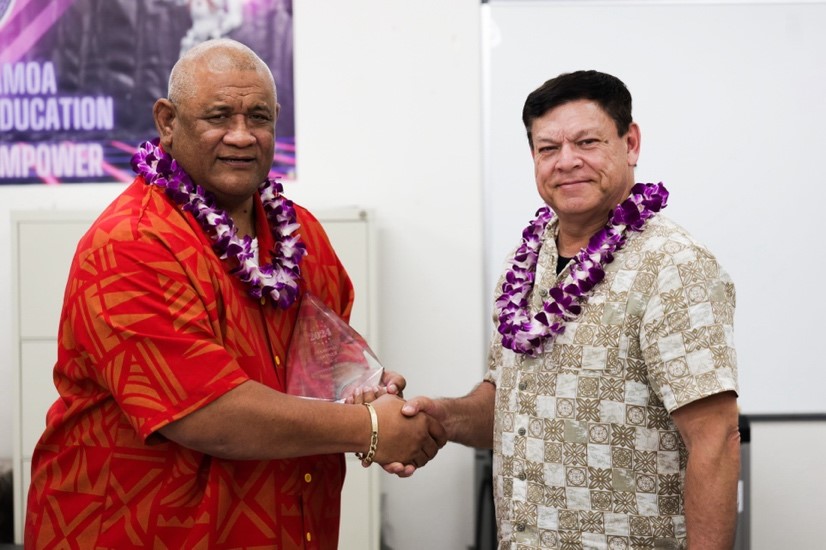 |

|
American Samoa Department of Education Head of Technology Integration Office Dr. Solomona Tuisamatatele (left) and RobotLAB Director of Customer Success Paul Knaack (right)
DALLAS (April 2, 2024) – RobotLAB, an award-winning robotics integrator that delivers impactful technological innovations and solutions for educators and business owners across the globe, has earned ‘Best Partnership’ in EdTech Chronicle’s 2023 Best in Education Awards for its transformative partnership with the American Samoa Department of Education. The inaugural “Bestie” Awards recognize people and partnerships that improve education technology access and learning across the globe. Inked in late 2023, RobotLAB’s partnership with the American Samoa Department of Education provided education technology solutions for all K-12 public schools in the island nation, including special education bundles for schools that offer autism therapy. The programs expose students to age-appropriate technology and encourage a mastery of computer science, artificial intelligence, automation, STEM and robotics.
- 0 Comments
- Apr 3, 2024 8:37:22 AM
- Posted by Maria Alejandra Calcetero
- Topics: STEM, School, Robots,, k12, STEM literacy, school robots
Robotics in STEM Education: Building the Innovators of Tomorrow
By Katie Brenneman
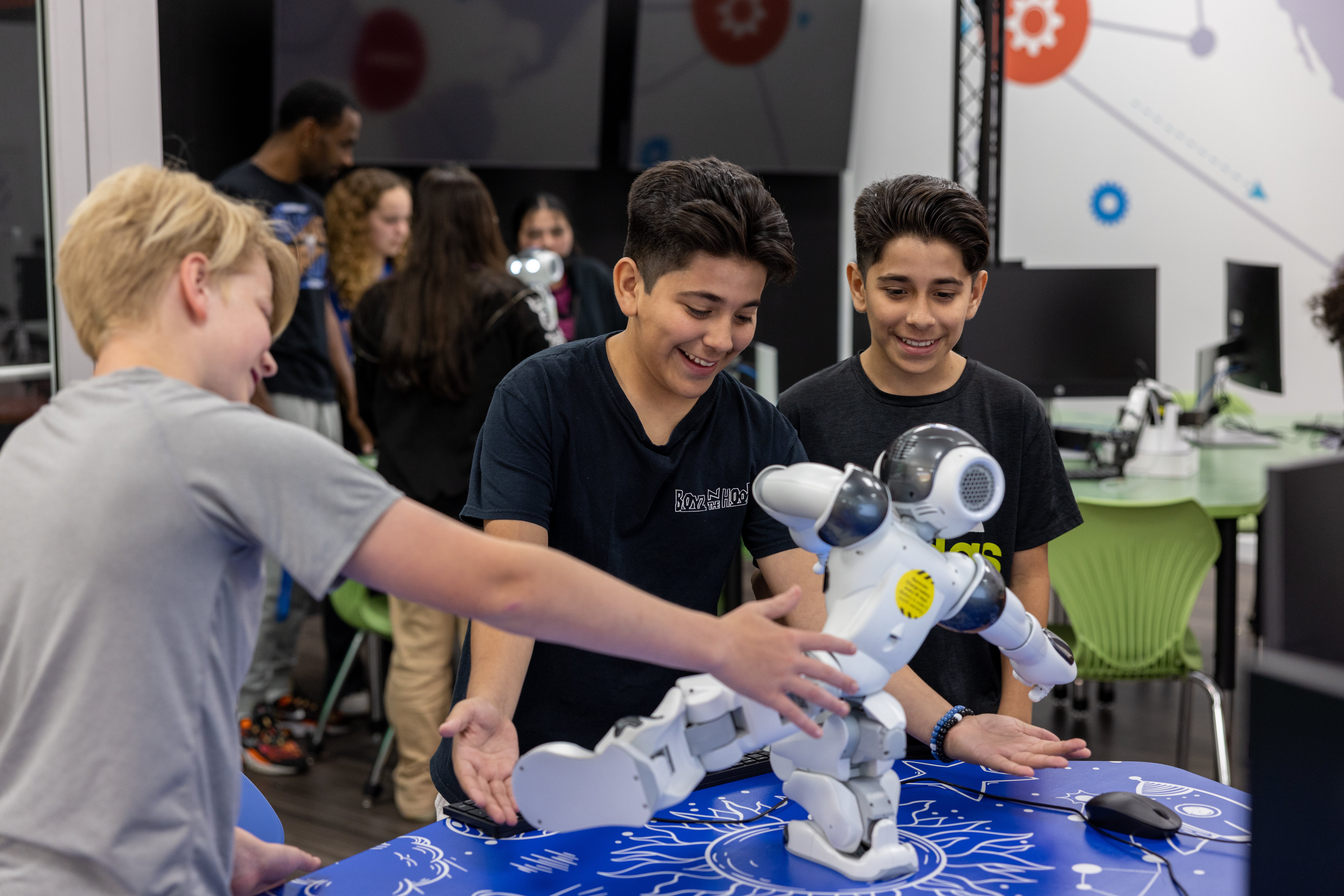
The power of a STEM-based education will never be understated. As a society, we have a growing dependence upon advanced technologies, even in industries that don’t initially appear directly related to STEM, which makes this type of education absolutely critical. The skills learned through science, technology, engineering, and math will continue to be essential to our society far into the future.
In the coming years, chances are that STEM advances will continue to have a bigger and bigger impact on our lives. One of the ways it will happen is through the incorporation of more robotics. Thousands of jobs will be lost to robotics and automation while thousands more will be created, largely in fields associated with managing and maintaining robotic systems. To prepare for this, our students will need to become familiar with robotics and become the innovators of tomorrow.
- 0 Comments
- Apr 2, 2024 1:53:54 PM
- Posted by Maria Alejandra Calcetero
- Topics: STEM, School, Robots,, k12, STEM literacy, school robots
Promoting Diversity and Inclusion In Robotics Education
By Devin Partida
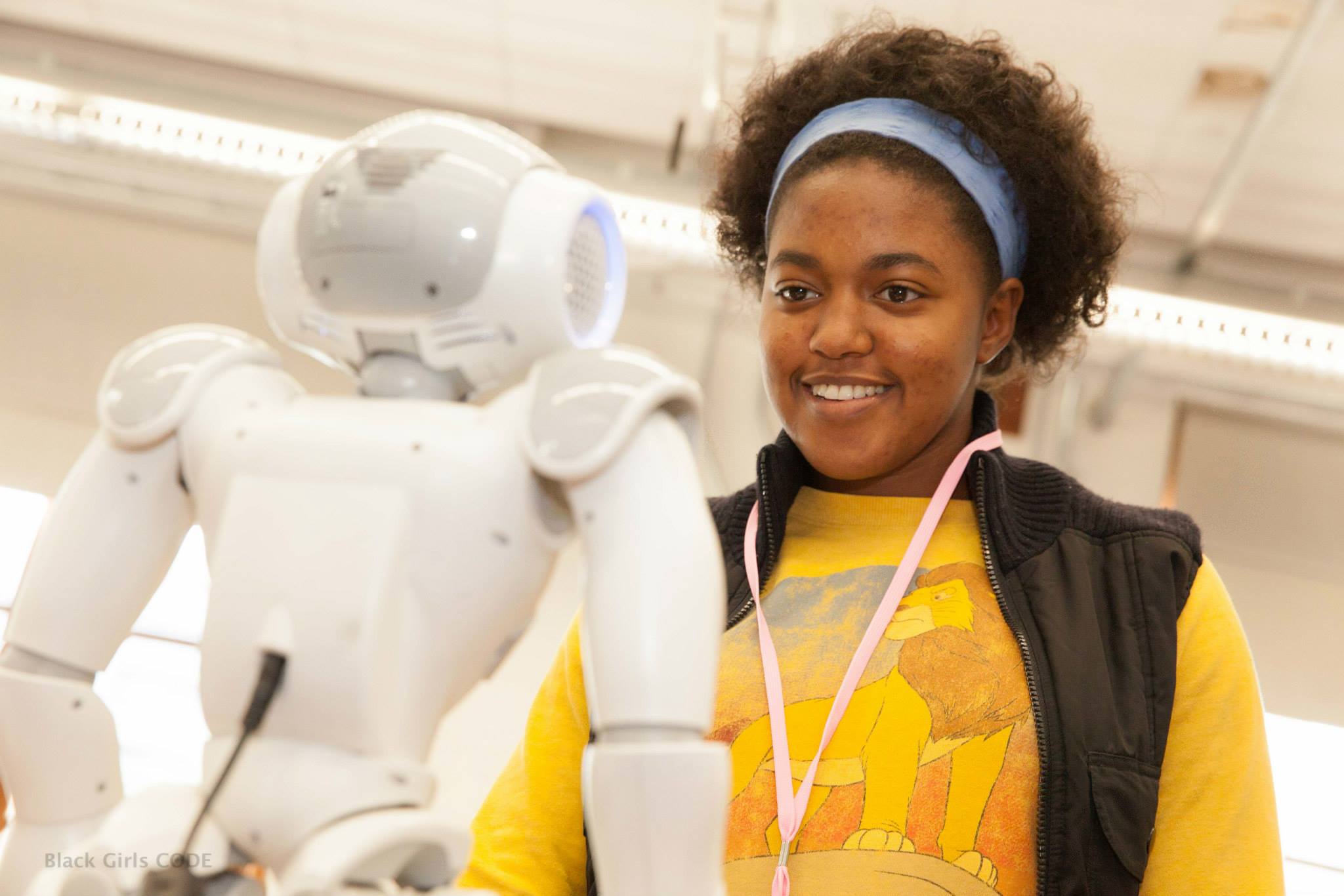 Image source: Black Girls Code
Image source: Black Girls Code
Diversity and inclusion are vital to creating a robotics education curriculum that invites all students to explore STEM. Many teachers today, at all levels, are working hard to make their approach more inclusive and equitable for all kids.
It can sometimes be confusing working out where to get started. These tips can be used in any classroom, for any type of course. They’ll give you a place to start building your inclusive robotics education strategy from so you can make the world of STEM accessible to all students.
- 0 Comments
- Aug 11, 2022 10:17:23 AM
- Posted by Natalia Galvis
- Topics: Robotics, EdTech, STEM, Artificial Intelligence, Robots,, AI, classroom, Inteligencia Artificial, school robots
Use Cases For Robotic Process Automation At Educational Institutions
By Carla Jose
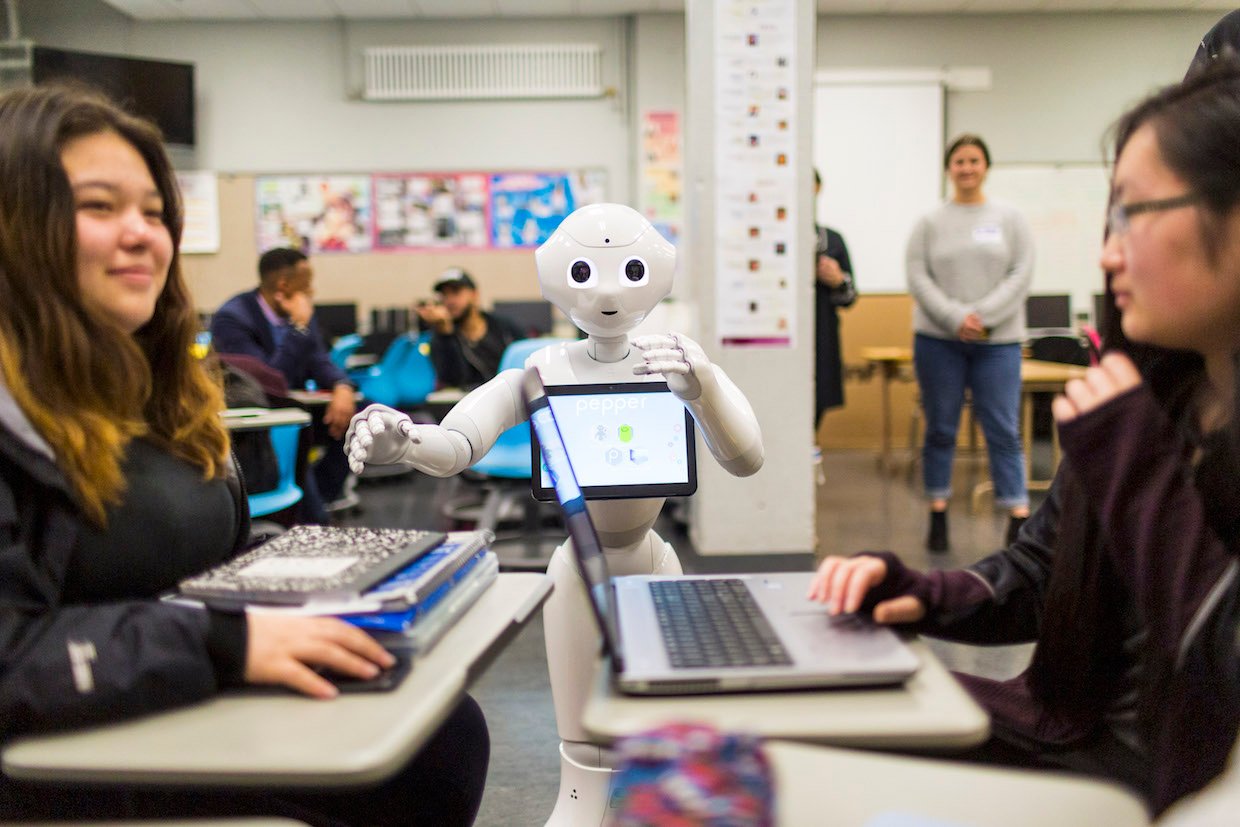 Image source: Softbank Robotics
Image source: Softbank Robotics
Whether it is creating a favorable learning environment or holding teacher-parent meetings, administrative and educational processes in universities, colleges, and schools are filled with a lot of paperwork and repetitive processes.
These processes consume a lot of resources and time, things that can be used in other areas to improve learning experiences. If you visit most universities around the globe, do not be surprised to find that they are largely understaffed.
The ratio of staff to students even gets worse in the peak season, meaning that a solution is needed as soon as possible. Fortunately, Robotic Process Automation (RPA) can help administrators and educators to automate processes and tasks in a bid to create a better working and learning environment.
- 0 Comments
- Jul 21, 2022 12:12:20 PM
- Posted by Natalia Galvis
- Topics: Robotics, EdTech, STEM, Artificial Intelligence, Robots,, AI, classroom, Inteligencia Artificial, school robots
Pursuing Education to Score a Robotics Career in Government
By Devin Partida
Because of today’s advanced technology, robots are the next big thing. Robots can help streamline processes and reduce human error, and a job in robotics can offer plenty of growth and a competitive salary.
If you are a robotics or STEM educator, here are some steps for helping students in their robotics career journey — especially if your students are interested in pursuing a robotics career within the government.
- 0 Comments
- Jul 20, 2022 8:42:42 AM
- Posted by Elad Inbar
- Topics: Robotics, EdTech, STEM, Artificial Intelligence, Robots,, AI, classroom, Inteligencia Artificial, school robots
How Educators and Millennial Parents Are Tackling EdTech Together
By Dan Matthews
 Photo by Julia M Cameron: https://www.pexels.com/photo/photo-of-woman-tutoring-young-boy-4145354/
Photo by Julia M Cameron: https://www.pexels.com/photo/photo-of-woman-tutoring-young-boy-4145354/
Let’s face it: Ours is truly the great age of technology. And while many parents may want their children to enjoy the simple innocence of childhood, free of the risks that an overreliance on tech can yield, the simple truth is that technology isn’t just a staple in the lives of children today, but it’s also inevitably going to form the cornerstone of their future success.
In other words, there’s just no denying the central importance of technology in the lives of children today. Millennial parents, however, understand perhaps better than most that this is by no means a necessarily bad thing. As the first generation of digital natives, millennials understand what it means to grow up with a device in your hands.
Best of all, they understand the unique power of technology as a learning tool. It is for this reason that millennial parents and educators are increasingly forging a potent alliance for the use of technology in education.
- 0 Comments
- Jun 29, 2022 10:00:00 AM
- Posted by Elad Inbar
- Topics: Robotics, EdTech, STEM, Artificial Intelligence, Robots,, Technology, AI, classroom, Inteligencia Artificial, school robots
Relevant Posts
- Augmented Reality: A Tool for Teaching Students Robot Programming
- Fostering Innovation Through Youth Education in STEM and EdTech
- How Parents Can Foster STEM Learning Beyond the Classroom
- How Robotics Cultivates a Deep Understanding of Mathematics in Students
- RobotLAB Receives EDTech Chronicle 2023 ‘BESTIE’ Award for Landmark Partnership with American Samoa Dept. of Education.
Subscribe to Email Updates
-
I Want To Learn MoreADDITIONAL INFORMATION

